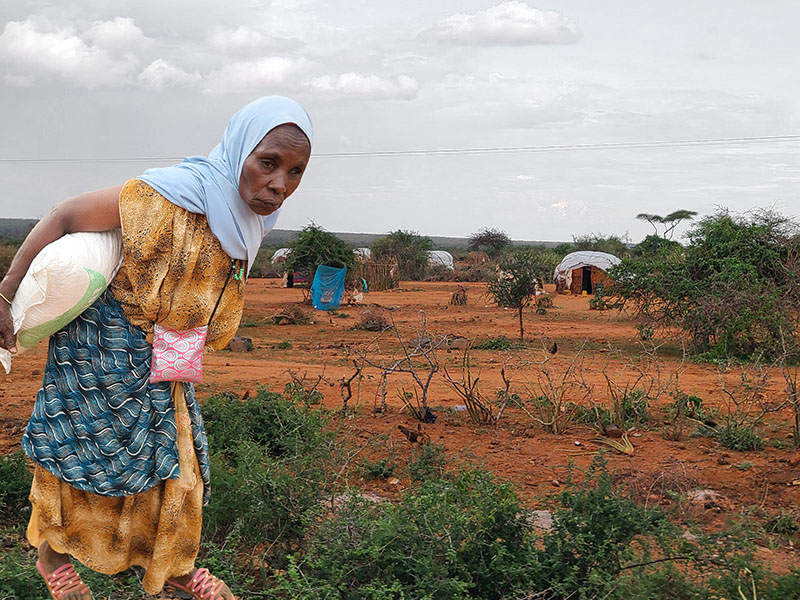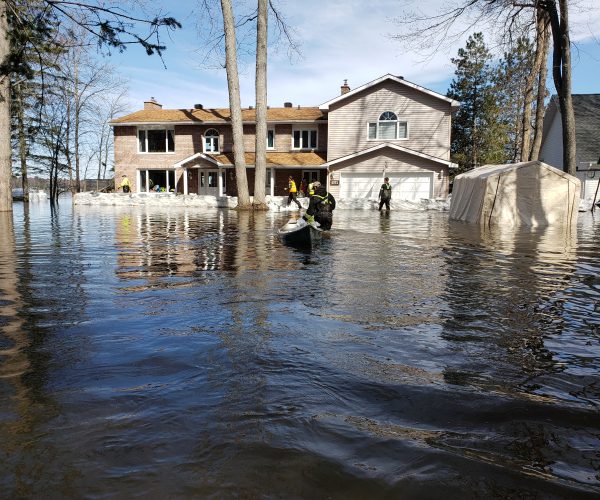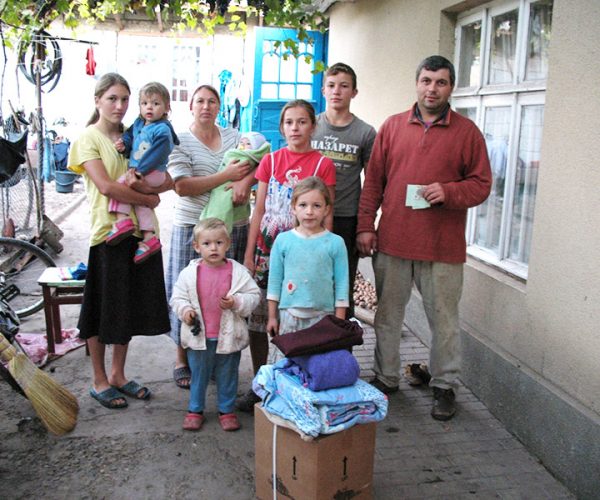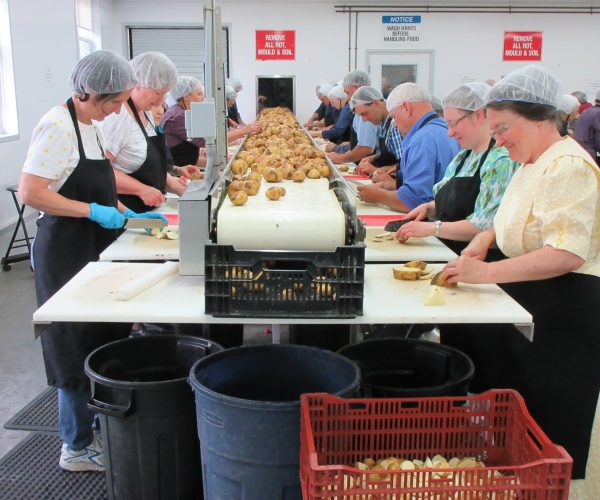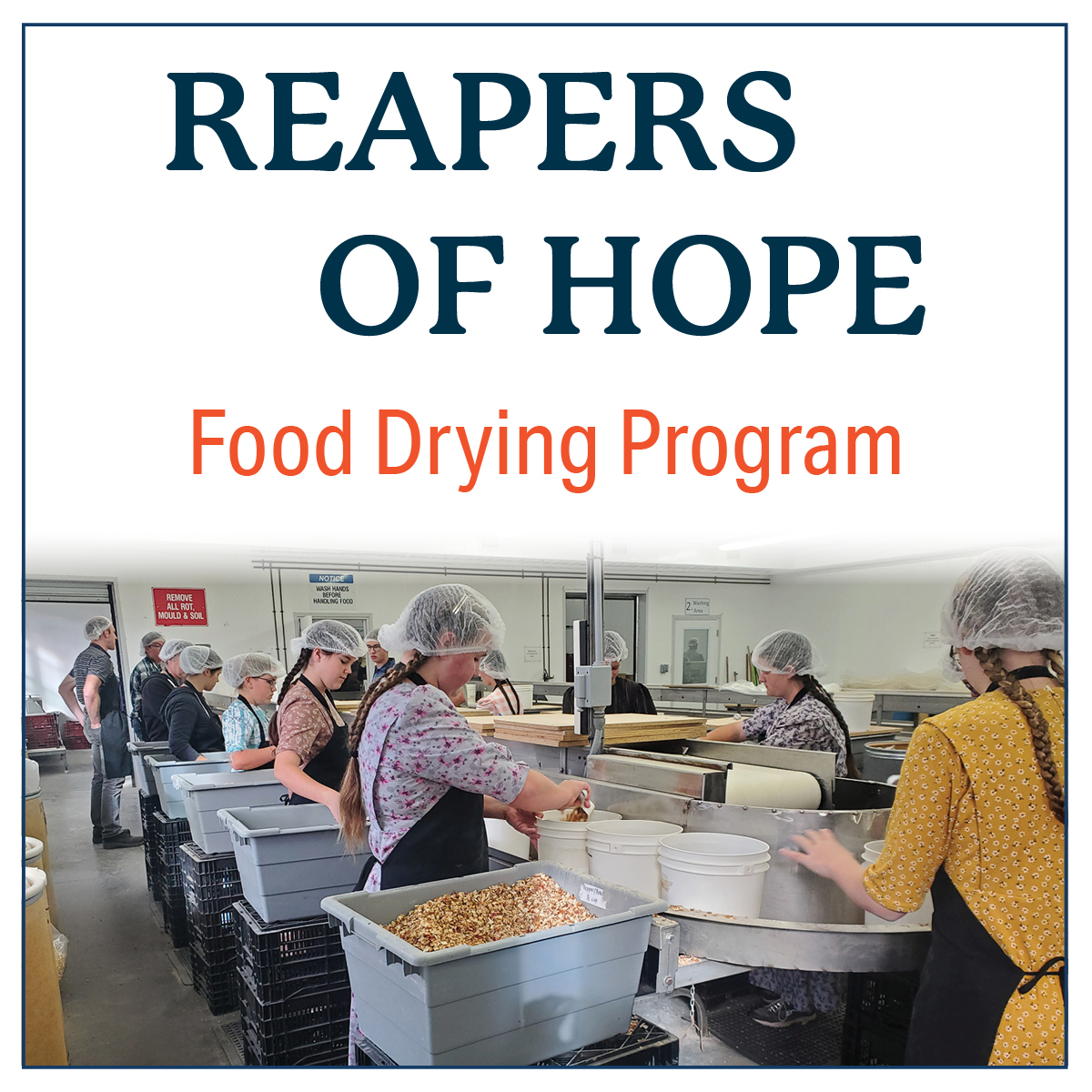Famine is looming in Ethiopia. The country’s typical rainy season has brought little rain to reprieve the parched ground in recent years. People are getting desperate as the drought drags on. Their crops are withering. The carcasses of their cows and goats lie scattered on the ground. Hunger and malnutrition rates are rising. The region has not experienced a drought this severe in decades.
“The drought is ongoing and shows no sign of letting up,” says a staff member who visited Ethiopia in November. “We were there during the harvest season, and even though it rained a little while we were there, it was hardly enough to settle the dust. . . .”
Villagers in rural southern Ethiopia know the effects of this drought firsthand. Many are nomadic animal herders and farmers whose livelihoods depend on their animals and crops. With ponds and rivers drying up and crops failing, villagers are struggling. Our staff member observed that the cows, goats, camels, and sheep people depend on so heavily are dying. “There was a sheen of green over the ground where grass was trying to grow from the recent rain, but it obviously wasn’t enough to feed the cattle,” he said. “We saw piles of cattle bones in one place . . . The cattle we did see were thin, with ribs showing . . .”
Ethiopia is located in the Horn of Africa.
The country is made up of many different ethnic groups and around 100 languages.
With their sources of food and income wasting away, Ethiopians wonder how they will survive. High grain prices make it even harder for them to afford basic food items. The World Food Programme estimates that some 3.9 million Ethiopian children are severely malnourished. Facing looming starvation and a seemingly hopeless future in their villages, thousands of people have left their homes.
Ethiopia’s series of hardships
Ethiopians are not strangers to hardships. In 2020 and 2021, swarms of locusts destroyed thousands of acres of crops. Civil war broke out in parts of the country in late 2020, and the next two years brought brutal fighting, tragic deaths, and widespread displacement. People who managed to escape the conflict spoke of the horrors and abuse they witnessed. The violence made it hard for food and other aid to reach conflict areas, leaving people facing severe hunger. In late 2022, warring parties agreed to peace, officially ending the conflict. But many needs remain.
In drought-stricken Ethiopia and surrounding countries like Somalia and Kenya, predictions for this year look bleak. A United Nations official says deaths from this drought will likely surpass those from the 2011 Horn of Africa famine when hundreds of thousands of people died.
Helping drought-stricken Ethiopians
In the face of these overwhelming needs, we have been supporting CAM contacts who are reaching out to Ethiopians. One way they are helping is by providing flour made from corn and soy. This flour contains nutrients and vitamins that provide important supplements to people’s diets. Our contacts try to focus on helping the most vulnerable, like children, mothers, and the elderly. They also hope to use this avenue to build relationships, opening doors to share the Gospel. If you would like to help, your support will provide food and other aid for Ethiopians facing a looming famine. God bless you!
“For thou hast been a strength to the poor, a strength to the needy in his distress.” (Isaiah 25:4a)
Christian Aid Ministries | March 2023
To help support the Ethiopia Famine, please click below to give a one-time gift.

